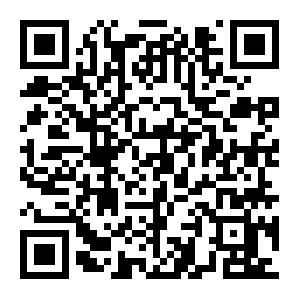|
[1]
|
Ou S M, Zheng J H, Zheng J S, et al. Petroleum hydrocarbons and polycyclic aromatic hydrocarbons in the surficial sediments of Xiamen Harbour and Yuan Dan Lake, China[J]. Chemosphere, 2004, 56(2): 107-112
|
|
[2]
|
Xing Y, Lu Y L, Dawson, R W, et al. A spatial temporal assessment of pollution from PCBs in China[J]. Chemosphere, 2005, 60(6): 731-739
|
|
[3]
|
Orbea A, Ortiz-Zarragoitia M, Sole' M, et al. Antioxidant enzymes and peroxisome proliferation in relation to contaminant body burdens of PAHs and PCBs in bivalve mollusks, crabs and fish from the Urdaibai and Plentzia estuaries (Bay of Biscay)[J]. Aquatic Toxicology, 2002, 58(1/2): 75-98
|
|
[4]
|
Fred A O. Organochlorine (PCBs and pesticides) in the bivalves Anadara (Senilis) senilis, Crassostrea tulipa and Perna perna from the lagoons of Ghana[J]. Science of the Total Environment, 2005, 348(1/3): 102-114
|
|
[5]
|
宋利华, 周红, 王婷婷. 贝类中药材动物养殖技术[M]. 北京: 中国林业出版社, 2001: 154-155
|
|
[6]
|
中华人民共和国国家质量监督检验检疫总局, 中国国家标准化管理委员会. 海水监测规范(GB17378—2007)[S].北京: 中国标准出版社, 2008
|
|
[7]
|
周传光, 徐恒振, 马永安, 等. 毛细管GC-ECD测定环境样品中的PCBs[J]. 海洋环境科学, 2000, 19(4): 57-61
|
|
[8]
|
汪正范. 色谱定性与定量[M]. 北京: 化学工业出版社, 2000: 170-172
|
|
[9]
|
中华人民共和国国家海洋局. 海洋生物质量监测技术规程(HY/T 078-2005)[S]. 北京:中国标准出版社, 2005
|
|
[10]
|
中华人民共和国国家质量监督检验检疫总局. 海洋生物质量(GB18421—2001)[S]. 北京: 中国标准出版社, 2004
|
|
[11]
|
中华人民共和国国家质量监督检验检疫总局. 农产品安全质量无公害水产品安全要求(GB18406.4—2001)[S]. 北京: 中国标准出版社, 2001
|
|
[12]
|
US Environmental Protection Agency. PCBs: Cancer Dose-response Assessment and Application to Environmental Mixtures[S]. EPA 600. P-96-00l F. U. S. Environmental Protection Agency, Washington, DC, 1996
|
|
[13]
|
Watanabea K H, Desimonea F W, Thiyagarajaha A, et al. Fish tissue quality in the lower Mississippi River and health risks from fish consumption[J]. The Science of the Total Environment, 2003, 302(1/3): 109-126
|
|
[14]
|
Jiang Q T, Lee T K M, Chen K, et al. Human health risk assessment of organochlorines associated with fish consumption in a coastal city in China[J]. Environmental Pollution, 2005, 136(1): 155-165
|
|
[15]
|
Guo J Y, Wu F C, Shen R L, et al. Dietary intake and potential health risk of DDTs and PBDEs via seafood consumption in South China[J]. Ecotoxicology and Environmental Safety, 2010, 73(7):1812-1819
|
|
[16]
|
丘耀文, 郭玲利, 张干. 深圳湾典型有机氯农药的生物累积及其人体健康风险[J]. 生态毒理学报, 2008, 3(1): 42-47
|
|
[17]
|
U.S. Environmental Protection Agency. Guidance for Assessing Chemical Contaminant Data for Use in Fish Advisories. Volume Ⅱ: Risk Assessment and Fish Consumption Limits[S]. EPA 823-B-94-008. United States Environmental Protection Agency, Washington, DC, 2000
|
|
[18]
|
|
|
[19]
|
贾晓平, 林钦, 吕晓瑜. 北部湾海洋动物的石油烃含量[J]. 热带海洋, 1990, 9(1): 94-100
|
|
[20]
|
Hong S H, Yim U H, Shim W J, et al. Nationwide monitoring of polychlorinated biphenyls and organochlorine pesticides in sediments from coastal environment of Korea[J]. Chemosphere, 2006, 64(9): 1479-1488
|
|
[21]
|
Hong, S H, Yim U H, Shim W J, et al. Congener specific survey for polychlorinated biphenyls in sediments of industrialized bays in Korea: regional characteristics and pollution sources[J]. Environmental Science and Technology, 2005, 39(19): 7380-7388
|
|
[22]
|
张晓岭, 杨方星, 闻胜, 等. 电子废物污染地区水生生物体内多氯联苯的异构体分布特征和毒性[J]. 水生生物学报, 2009, 33(5): 811-817
|
|
[23]
|
Kima S K, Oh J R, Shimb W J, et al. Geographical distribution and accumulation features of organochlorine residues in bivalves from coastal areas of South Korea[J]. Marine Pollution Bulletin, 2002, 45(1/2): 268-279
|
|
[24]
|
马继臻, 袁骐, 蒋玫, 等. 东海沿岸不同区域贝类体内石油烃含量的分布特征及其评价[J]. 海洋通报, 2008, 27(2): 74-79
|
|
[25]
|
|
|
[26]
|
李磊, 王云龙, 袁骐, 等. 浙江沿岸海域经济贝类中有机氯农药和多氯联苯的残留分布与污染评价[J]. 海洋学研究, 2010, 28(3): 52-59
|
|
[27]
|
钟硕良, 蔡玉婷, 董黎明, 等. 海水养殖贝类体中TPH 和PCBs 的分布和积累研究[J]. 海洋水产研究, 2008, 29(2): 82-89
|
|
[28]
|
钟硕良. 福建沿海养殖贝类体石油烃总量水平的分布特征[J]. 海洋通报, 2005, 24(6): 33-40
|
|
[29]
|
吴祥庆, 黎小正, 杨姝丽, 等. 北海沿海文蛤体有机氯农药和多氯联苯的残留水平及分布[J]. 海洋环境科学, 2011, 30(2): 199-203
|
|
[30]
|
Boscolo R, Cacciatore F, Berto D, et al. Polychlorinated biphenyls in clams Tapes philippinarum cultured in the Venice Lagoon (Italy): Contamination levels and dietary exposure assessment[J]. Food and Chemical Toxicology, 2007, 45(6): 1065-1075
|
|
[31]
|
Kima S K, Oh J R, Shim W J, et al. Geographical distribution and accumulation features of organochlorine residues in bivalves from coastal areas of South Korea[J]. Marine Pollution Bulletin, 2002, 45(1/12):268-279
|
|
[32]
|
Mora S d, Tolosa I, Fowler S W, et al. Distribution of petroleum hydrocarbons and organochlorinated contaminants in marine biota and coastal sediments from the ROPME Sea Area during 2005[J]. Marine Pollution Bulletin, 2010, 60(12): 2323-2349
|
|
[33]
|
Pikkarainen A L. Polychlorinated biphenyls and organochlorine pesticides in Baltic Sea sediments and bivalves[J]. Chemosphere, 2007, 68(1): 17-24
|
|
[34]
|
Jin Y N, Hong S H, Li D H, et al. Distribution of persistent organic pollutants in bivalves from the northeast coast of China[J]. Marine Pollution Bulletin, 2008, 57(6/12):775-781
|
|
[35]
|
甘居利, 贾晓平, 林钦, 等.中国海洋贻贝观察: 华南沿海近江牡蛎(Crassostrea rivularis)体多氯联苯含量时空变化[J]. 海洋与湖沼, 2009, 40(6): 726-731
|
|
[36]
|
Gilek M, Bjork M, Naf C. Influence of body size on the uptake, deputation and bioaccumulation of PCB congeners by Baltic Sea blue mussel, Mytilus edulis[J]. Marine Biology, 1996, 125(3): 499-510
|
|
[37]
|
吴祥庆, 黎小正, 杨姝丽, 等. 广西钦州湾近江牡蛎体内有机氯农药和多氯联苯的残留水平与分布[J]. 海洋科学, 2010, 34(4): 49-52
|
|
[38]
|
Schwenk M, Gabrio T, Ppke O, et al. Human biomonitoring of polychlorinated biphenyls and polychlorinated dibenzodioxins and dibenzofuranes in teachers working in a PCB-contaminated school[J]. 2002, Chemosphere, 47(2):229-233
|


 点击查看大图
点击查看大图


 下载:
下载:
